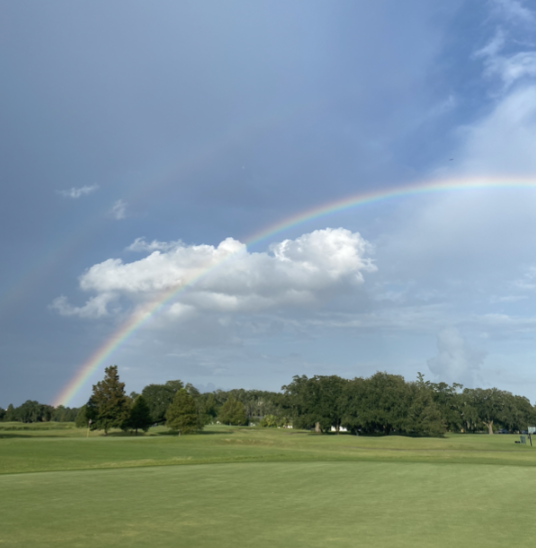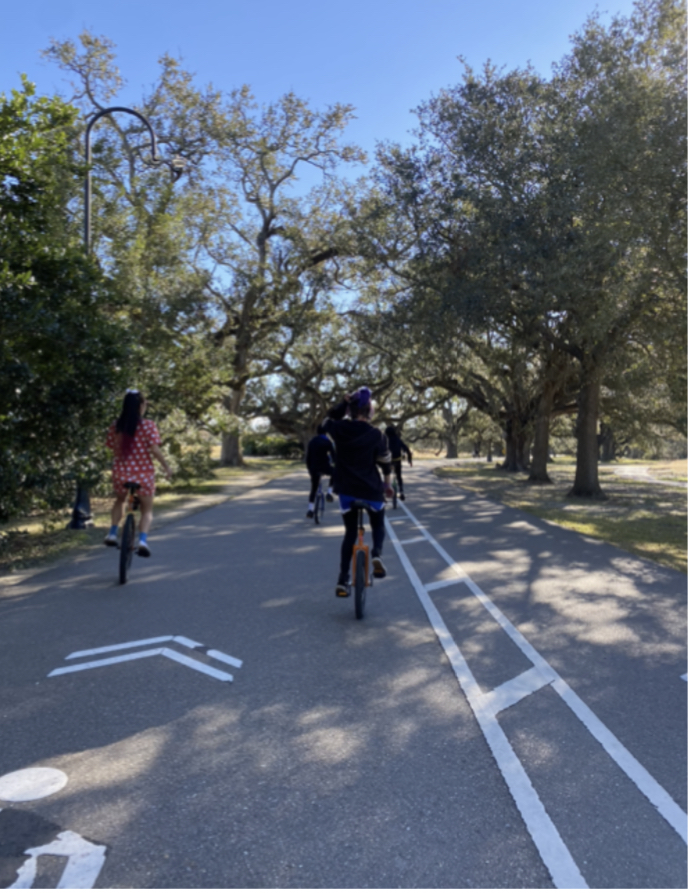Cy Serrano, a college student from the University of Southern California, stated that his nights consist of two hours of rehearsal for the acapella group he is president of, and then another three hours of homework each night. Another student, Michelle Hattan from University of Illinois Urbana-Champaign, stated that on days when she has an engineering council meeting from 7:00-8:00 pm, she usually goes straight to working on homework at the library from 8:00 pm-12:00 am. Rachel Montpelier from Nazareth College in Rochester, New York says she wakes up at 6:30 am, but typically does not have time to start working on her homework until 8:45 pm. These schedules are just some examples of the 1.9 million students enrolled at different universities around the United States, 81% who are also working and trying to retain a well balanced life. For Tulane University students working to find places to go to contribute to a productive day, there is Audubon Park.

Double rainbow over Audubon Park golf course (Photo by: Shoshana Kaplan)
Audubon Park faces directly across from Gibson Hall on St. Charles Street, and offers endless opportunities to keep visitors busy. A main aspect of Audubon Park is exercise. A 1.80 mile lap with a walking/running lane and a bike lane offers plenty of room for all visitors to enjoy anything from walking to rollerblading to running to biking to skateboarding around the loop. The loop is typically filled with pet owners walking their dogs, friends and families walking and chatting, and solo runners getting in their workout for the day. Throughout the path there are four side areas with benches and bars where people can work on core exercises, pull ups, or any other creative workout. In the middle of the path there is an 18-hole golf course filled with greenery. The outside of the path also has many grass fields, where people commonly play frisbee or soccer. The general ambiance of the park is completed with a sparkling lake surrounded by birds and many wooden gazebos. The high amount of adventures and tasks that are possible in Audubon Park fit right into a “go go go” college schedule.

Unicycle group on Audubon Park path (Photo by: Shoshana Kaplan)
Speaking from a scientific point of view, taking the opportunity to exercise in Audubon Park contributes to the release of hormones called endorphins from the pituitary gland that fuels motivation, calms stress, and pushes people to work harder. Dr. P.B. Rokade, in a review on endorphins and their effects, explained that, “When the athlete crosses the limit of his exercise then endorphins are released which reduces the pain by stopping the pain signals and the athlete is able to workout for more time even after his threshold limit is over”. For any busy and productive person, stimulating the release of endorphins in the brain allows them to push through a stopping point and do better than they normally would. Even after endorphins motivate someone through a tough workout, they have lasting effects that ultimately lead to a more effective day and higher energy. Rokade also stated that the release of endorphins in people “gives them strength, confidence and gives a good mood to them, a mood of being well and happy”. While endorphins play a large part in creating a happier, more energized mood, there are other factors that contribute to mood states changing. One of these factors is sound.
Throughout Audubon Park there is a variety of sounds visitors may hear. In the lake there is a large fountain that makes a splashing noise, there are birds chirping throughout the park with a particularly larger population of birds by the lake and on the golf course. Great Egrets are a common species of bird in Audubon Park, and they are often making a croaking noise. Visitors walking on the path constantly hear bike bells dinging, the pitter patter of feet walking and running, the shortness of breath of runners, music blasting from the speakers of others on the path, or music in one’s own airpods that people bring to the park. When walking past the entrance for Audubon Zoo across the street, visitors hear a lot of car engines rumbling and cars honking as they drive down Magazine street. Due to the construction on Magazine street, there is also a lot of drilling noises and beeping of trucks. All throughout the park exists the white noise of conversation, laughter, wind, and leaves brushing up against each other within the trees.

Great Egrets by Audubon Park lake (Photo by: Shoshana Kaplan)
Results from studies on the influence of sound have demonstrated that many of the sounds that exist in Audubon Park positively influence moods such as anger, confusion, depression, fatigue, tension, and vigor. Boyan Zhang and Jian Kang conducted a study to see how different contexts and sound types affect these mood states. Participants of the study listened to bird songs, human voices, and distant traffic sounds paired with a picture of a courtyard, chanting and prayer wheels paired with a picture of a temple hall, and sounds of insects and wind paired with a picture of a meadow. All six moods measured were affected by the difference in sound clips. Zhang and Kang wrote that “the sound appropriateness likely affected the mood changes” and “the introduction of activities with dominant human sounds can significantly reduce negative emotions”. They used a form of the profile of different mood states to capture participants’ mood states and found that an environment with the noises the participants heard lessened any of their negative feelings. They also stated that “greenery can help improve the mood states”. The strategies proven to help change mood states can be of assistance to those without a moment to spare from a busy schedule, or even a generally relaxed person with a light schedule.
Austin Carmody was an undergraduate student at University of Illinois Urbana-Champaign, and he shared that his first semester freshman year he wanted to take a more relaxed route for his class schedule. For example, on Mondays his only classes were at 11 am and 12 pm. On Tuesdays he would start at 9:30 am and end his classes by 2:50 pm. The 1.9 million college students across the country vary in how much they want to relax and be productive throughout their day. Tulane University students having access to Audubon Park at their fingertips get to reap the benefits of the areas of the park that promote relaxation and the areas that promote productivity. For productive days, there are the paths for walking, running, and biking. For relaxed days, there are the gazebos next to the sparkling lake. There is always a wide range of activities to choose from, sights to see, and mood states existing in Audubon Park.

Sunset over path in Audubon Park (Photo by: Shoshana Kaplan)
 NOLAbeings Multimedia artist Claire Bangser created NOLAbeings as a portrait-based story project that marries...
NOLAbeings Multimedia artist Claire Bangser created NOLAbeings as a portrait-based story project that marries...  Voodoo in New Orleans: Reviving history: New Orleans fortune telling This article takes a deep dive into the history of Voodoo in New Orleans, its hybridization with Catholicism, and its present-day place in the city's culture. The author visits fortune-tellers in the French Quarter, using their guidance as a tool for introspection rather than a deterministic predictor of the future. Through her experiences in New Orleans, the author feels a mystical connection to both the past and the future.
Voodoo in New Orleans: Reviving history: New Orleans fortune telling This article takes a deep dive into the history of Voodoo in New Orleans, its hybridization with Catholicism, and its present-day place in the city's culture. The author visits fortune-tellers in the French Quarter, using their guidance as a tool for introspection rather than a deterministic predictor of the future. Through her experiences in New Orleans, the author feels a mystical connection to both the past and the future. 